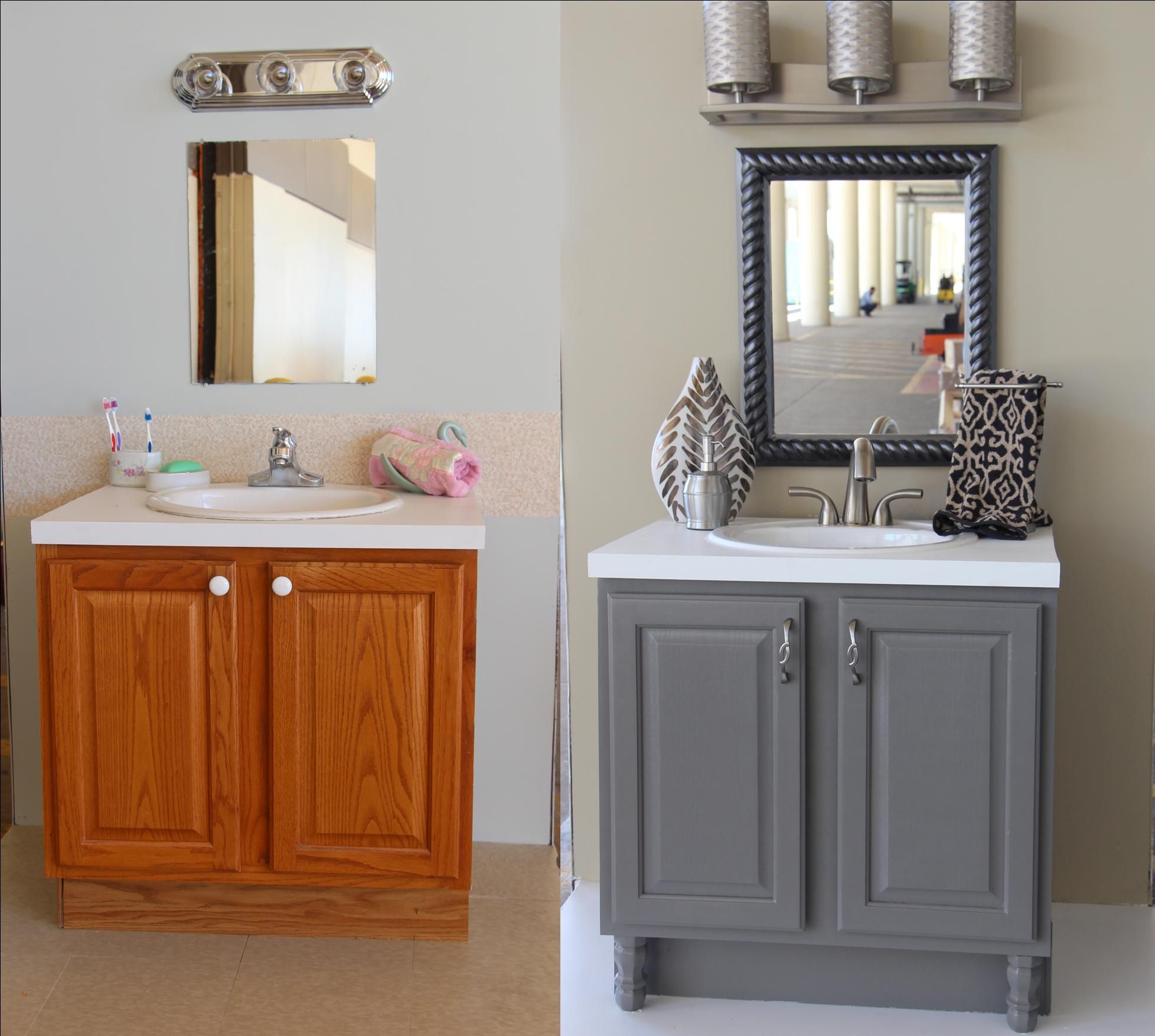Applying Chalk Paint to Bathroom Cabinets

Transforming your bathroom cabinets with chalk paint is a rewarding DIY project! This guide provides a step-by-step process for achieving a professional-looking finish. Remember, proper preparation is key to a successful outcome.
How to paint bathroom cabinets with chalk paint – Before you begin, ensure your cabinets are clean, sanded, and primed. This will create a smooth surface for the paint to adhere to, preventing chipping and peeling. Consider using a deglosser to remove any existing shine from the cabinets for optimal adhesion.
Applying Chalk Paint: A Step-by-Step Guide, How to paint bathroom cabinets with chalk paint
- Prepare the Surface: Thoroughly clean the cabinets with a degreaser to remove any dirt, grease, or grime. Sand lightly with fine-grit sandpaper to create a slightly rough surface for better paint adhesion. Wipe away dust with a tack cloth.
- Apply the First Coat: Using a high-quality brush, apply a thin, even coat of chalk paint in the direction of the wood grain. Avoid overloading the brush; it’s better to apply multiple thin coats than one thick coat. Let it dry completely according to the manufacturer’s instructions.
- Address Brushstrokes (Optional): For a smoother finish, lightly sand between coats with very fine-grit sandpaper. This will help blend any brushstrokes and create a more even surface. Always wipe away dust with a tack cloth before applying the next coat.
- Subsequent Coats: Apply additional coats as needed, allowing each coat to dry completely before applying the next. Two to three coats are typically sufficient for full coverage, depending on the color and the original cabinet finish.
- Final Touches: Once the final coat is dry, consider applying a sealant to protect the paint and make it more durable, especially in a high-moisture environment like a bathroom.
Chalk Paint Application Methods
Different application methods yield different results. Choosing the right technique depends on the desired look and feel.
- Brushing: This is the most common method, offering good control and even coverage. Using a high-quality brush with soft bristles will minimize brushstrokes.
- Sponging: Sponging creates a textured, slightly distressed look. Dip a natural sea sponge into the paint, dab off excess, and apply in a stippling motion. This technique is excellent for achieving a shabby chic or vintage effect.
- Rag Rolling: Rag rolling provides a unique, slightly mottled finish. Apply a thin coat of paint with a brush, then use a crumpled rag to dab and blend the paint, creating a subtle texture. This method works best with darker chalk paint colors.
Ventilation and Drying Time
Proper ventilation is crucial when working with paint. Always open windows and doors to ensure adequate airflow. This helps prevent the build-up of harmful fumes and ensures proper drying. Chalk paint typically requires several hours to dry completely between coats; always refer to the manufacturer’s instructions for specific drying times. Wear a respirator mask to minimize inhalation of paint fumes, and use gloves to protect your skin.
Sealing and Finishing Chalk-Painted Bathroom Cabinets: How To Paint Bathroom Cabinets With Chalk Paint

Protecting your beautifully chalk-painted bathroom cabinets from the humid environment is crucial for longevity. Proper sealing prevents moisture damage, chipping, and discoloration, ensuring your cabinets remain stunning for years to come. This process involves selecting the right sealant and applying it meticulously for a professional finish.
Sealant Options for Bathroom Cabinets
Choosing the right sealant depends on your desired level of durability and the overall look you want to achieve. Several options exist, each with its own advantages and disadvantages.
| Sealant Type | Pros | Cons | Application Method |
|---|---|---|---|
| Wax | Easy application, creates a soft, antique look, relatively inexpensive. | Less durable than other options, requires regular reapplication, offers minimal protection against moisture. | Apply thinly and evenly with a soft cloth, buff to a shine. |
| Polyurethane (Water-Based) | Durable, water-resistant, provides excellent protection against moisture and wear. | Can yellow over time, requires careful application to avoid brush strokes, may require multiple coats. | Apply with a high-quality brush or roller in thin, even coats, allowing adequate drying time between coats. |
| Topcoats (e.g., Acrylic Sealer) | Good protection, relatively easy to apply, available in various finishes (matte, satin, gloss). | May alter the chalk paint’s matte finish, requires careful application to avoid streaks or bubbles. | Apply with a brush or roller, following the manufacturer’s instructions regarding drying time and number of coats. |
Applying Sealant for a Smooth Finish
Proper application is key to a professional-looking finish. Begin by ensuring your chalk paint is completely dry. Work in small sections, applying thin, even coats with gentle, even strokes. Avoid overloading your brush or roller, as this can lead to drips and runs. For polyurethane or acrylic sealers, use long, smooth strokes in the direction of the wood grain. Allow each coat to dry completely before applying the next, following the manufacturer’s recommended drying time. Light sanding between coats with fine-grit sandpaper (220-grit or higher) can help create an even smoother surface. For wax, apply thinly and buff thoroughly with a clean, soft cloth to achieve a polished sheen. Remember, patience is crucial – rushing the process can lead to imperfections.
